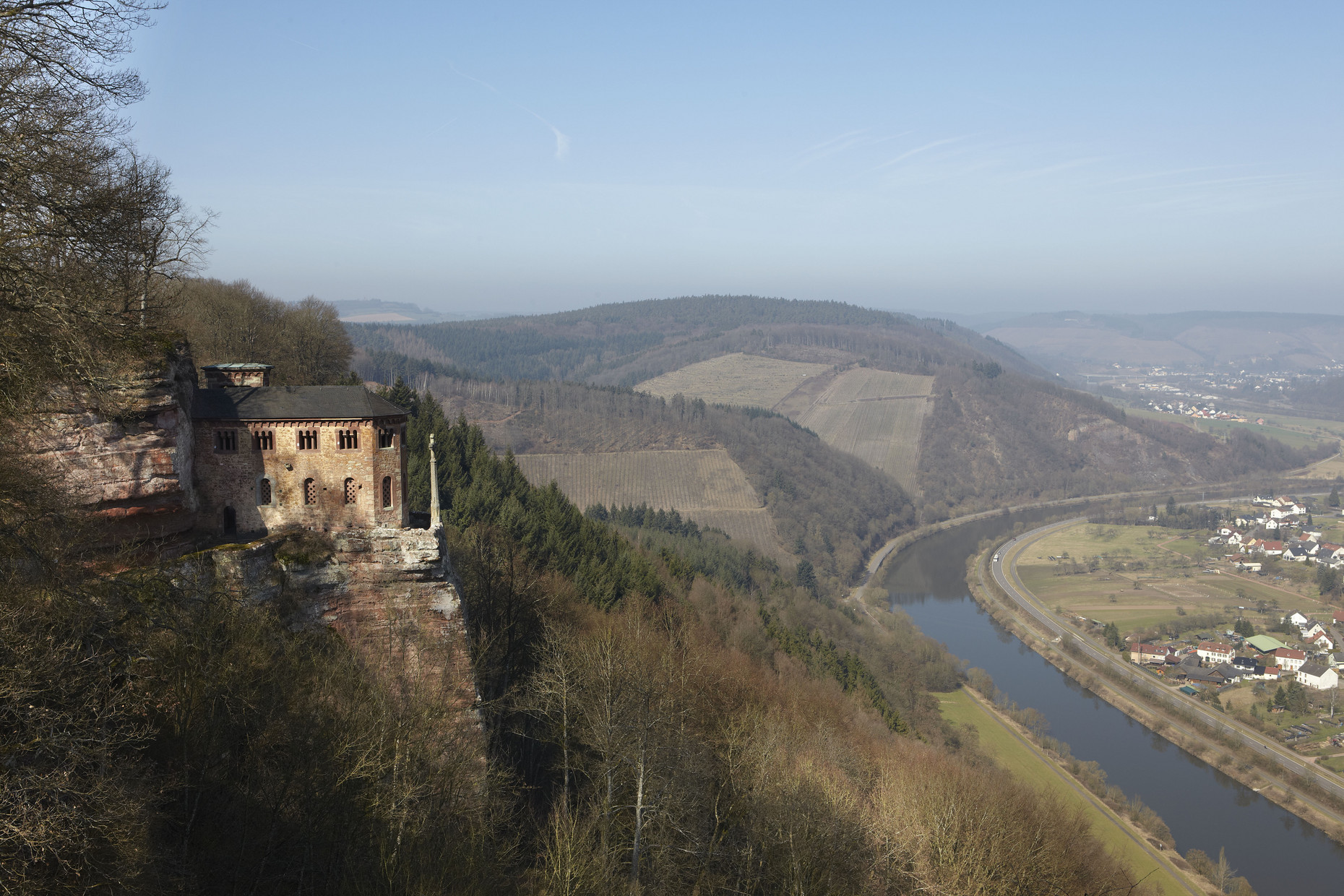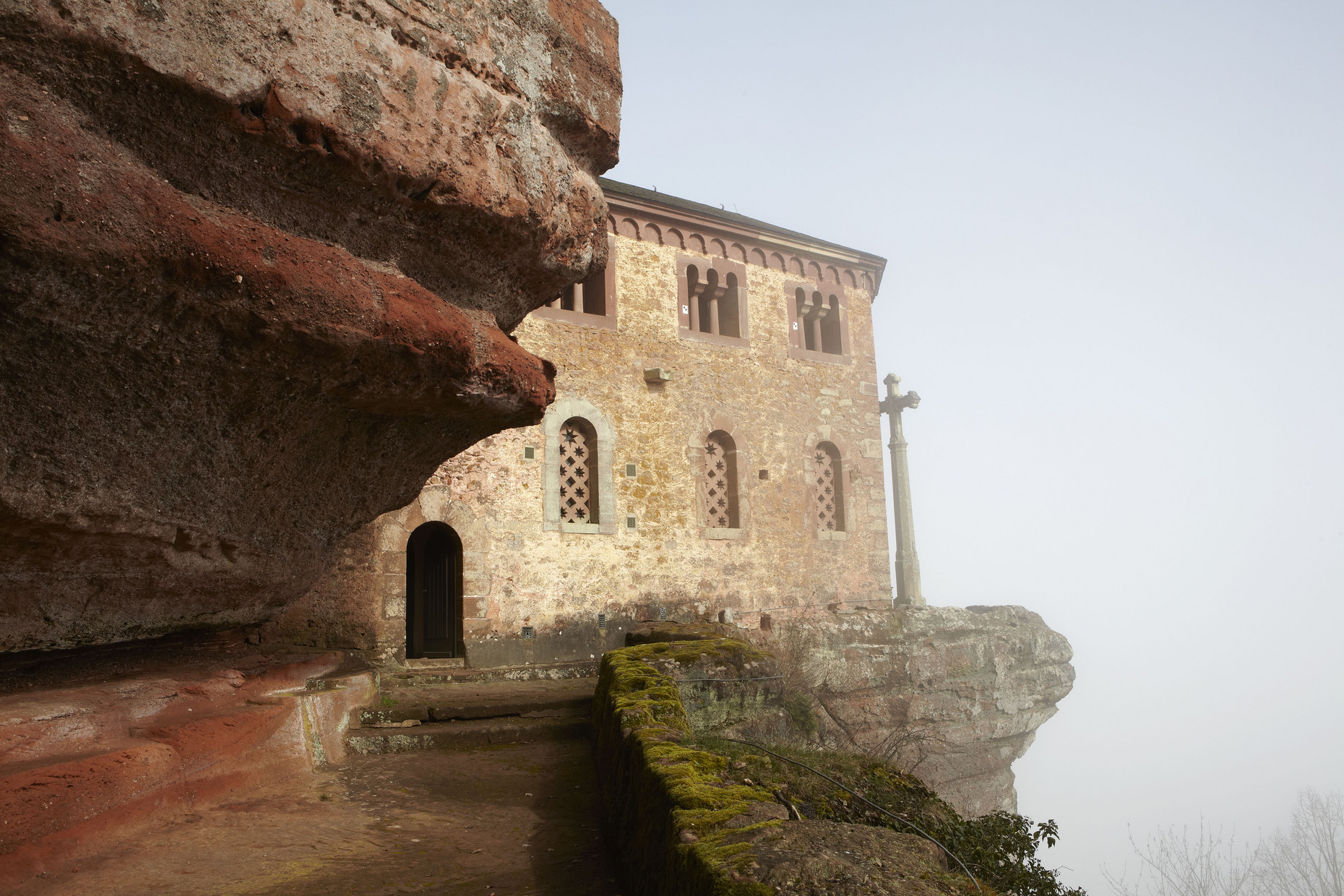Welcome to Hermit's Cell Kastel
Perched like a bird's nest on a sandstone cliff high above the Saar valley near Serrig: the Hermit's Cell Kastel. The burial place for the remains of the blind King John was designed by none other than Karl Friedrich Schinkel (1781 - 1841) and is considered one of the architectural highlights of German Romanticism. The site itself has an even longer tradition as a place of worship and consecration, dating back to pre-Christian times. Particularly fascinating: the chambers and niches carved into the sandstone by hermits in the early Middle Ages.
Opening hours
Current opening hours and further information can be found at www.saar-obermosel.de
Address
Klause Kastel
König-Johann-Straße 66
54441 Kastel-Staadt
__
Hermits's Cell Kastel is a historical site of the Generaldirektion Kulturelles Erbe Rheinland-Pfalz (General Directorate for Cultural Heritage Rhineland‑Palatinate), www.gdke.rlp.de.
Regrettably, as it is a historic site, there is no disabled access to Hermit's Cell Kastel. Thank you for your understanding.
High above the Saar, on the top of a protruding sandstone rock, lies the Hermit’s Cell Kastel.
The burial place for the remains of the blind King John of Bohemia was built in the period 1835 - 1838 according to plans by Karl Friedrich Schinkel. It is considered one of the highlights of German Romanticism. It was commissioned by the Prussian Crown Prince and later King Frederick William IV.
The hermit’s cell was not a new building, but rather erected on the ruins of a chapel from the early 17th century. Schinkel integrated Romanesque formal elements, but left the interior of the sacred space with its Gothicised ribbed vault untouched. However, he added elements such as the altar platform with the black marble coffin and the window grilles decorated with stars. The outer walls of the hermit’s cell were deliberately left unplastered to allow architecture and nature to merge.
On the way to the hermit’s cell, visitors can visit the rock chambers that hermits carved into the soft sandstone in the early Middle Ages to live in seclusion.
Tourist-Information
Graf-Siegburg-Str. 32
54439 Saarburg
Phone +49 6581 995980
info-saarburg(at)saar-obermosel.de
www.saar-obermosel.de

